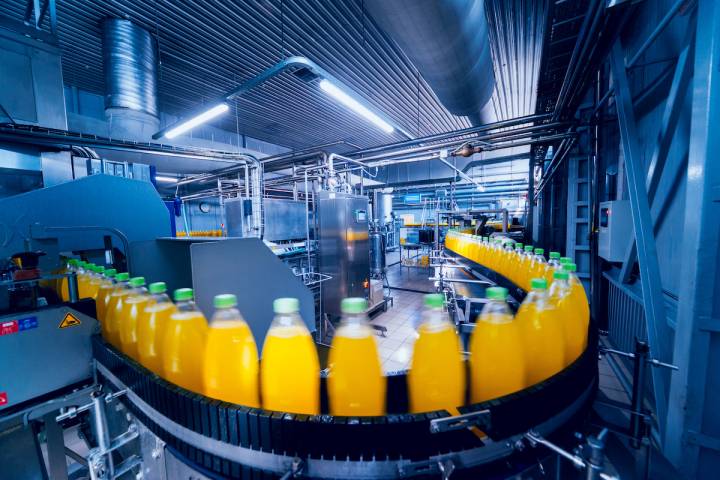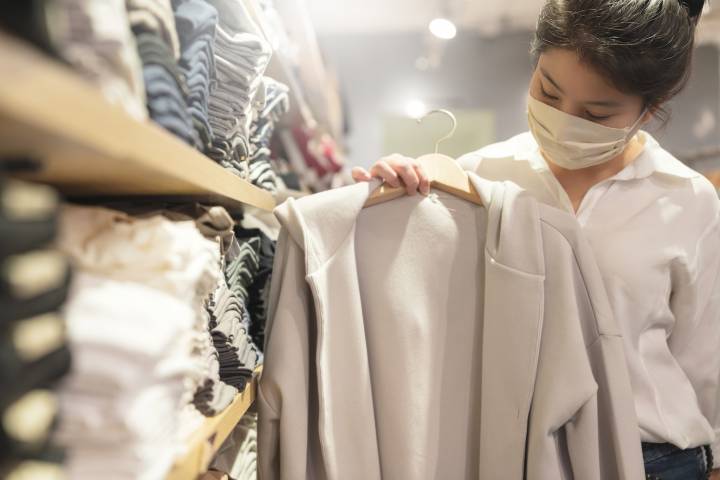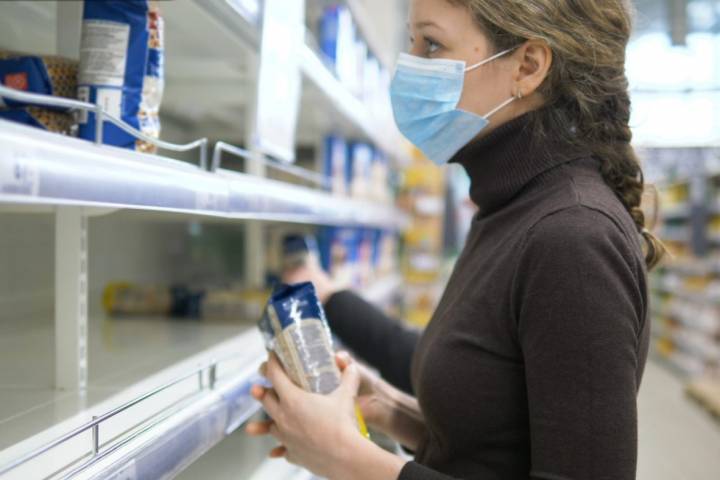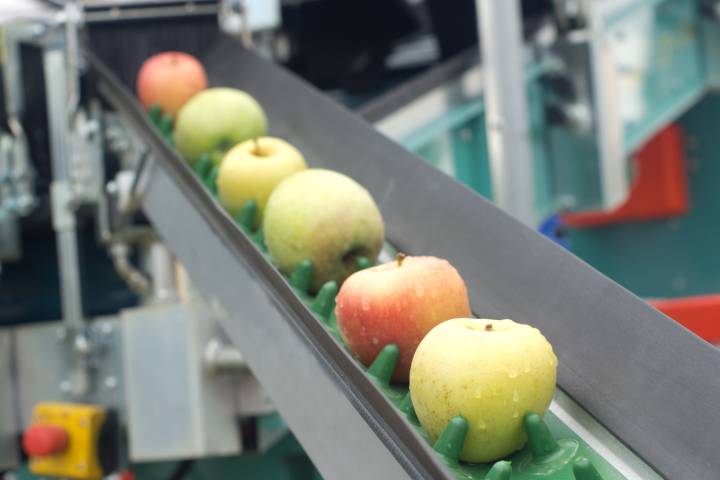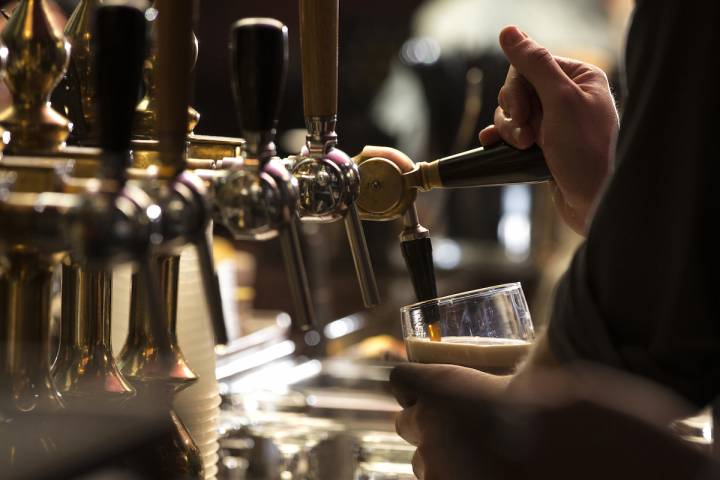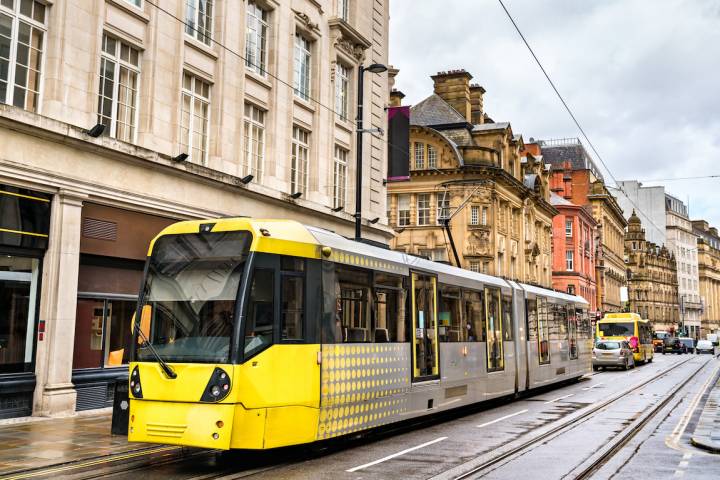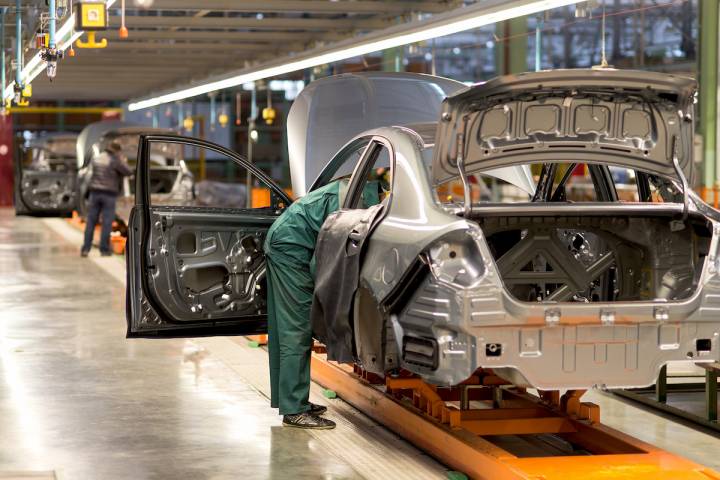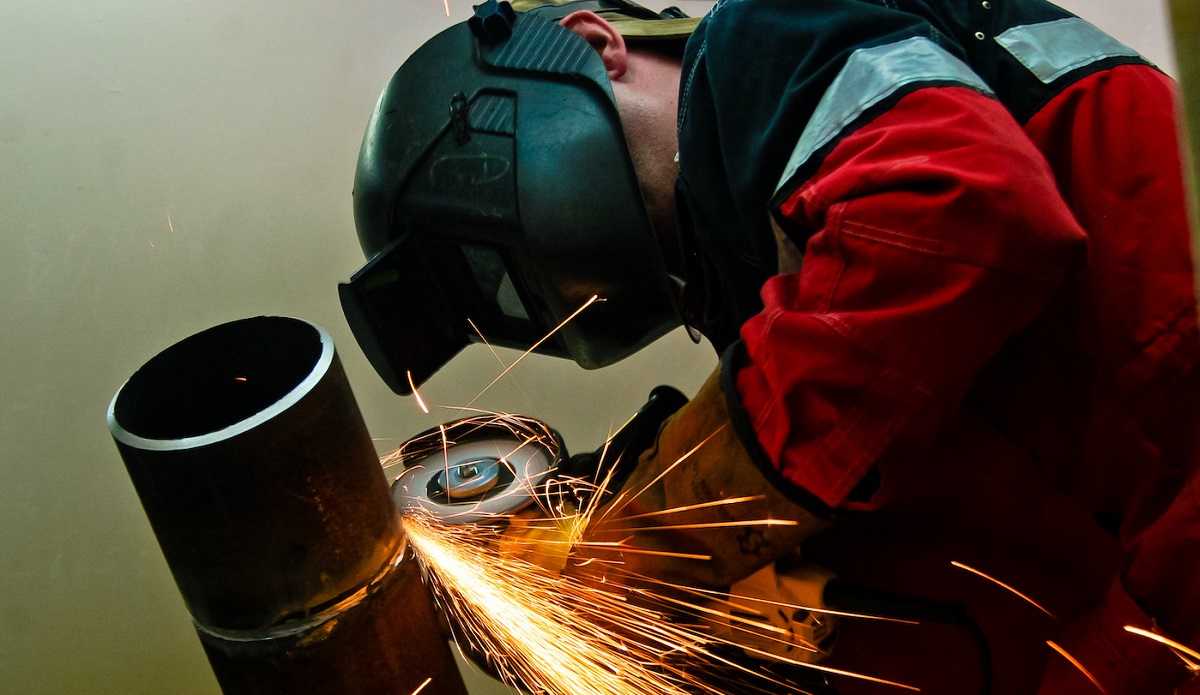Footfall to the Pub and Pub and Restaurant sector is dwindling in the wake of tighter restrictions, with attendance dropping below 20% of usual levels for the first time since June. Following a steady recovery boosted by Eat Out to Help Out in August, Pubs and Restaurants attendance had been hovering around 70% of usual levels throughout September.
Europe’s hoteliers enjoyed a far stronger post-lockdown recovery than those in the UK over summer, with hotels on the continent experiencing guest levels comparable to 2019 whilst the UK struggled to muster much more than 70%.
Worker presence at food manufacturing plants across Europe has dropped to just 16pts of equivalent levels last year, a low not seen since countries began to re-emerge from the first lockdown at the end of April.
Campuses across the UK are fast becoming ghost towns as students swerve physical University attendance in favour of remote working. While Autumn traditionally sees universities buzzing with freshers week and the start of a new academic year, Huq’s data shows that attendance is struggling to get beyond 22% of normal term time.
Staff-levels at manufacturing plants, a proxy for productivity, in the UK have caught up with those in the EU for the first time in 2020, with attendance even nudging higher than the EU for the first time since April in the last week. Both regions saw a gradual recovery in staffing following a sharp decline in March, but the start of summer saw the UK’s manufacturing recovery stagnate to around half of European levels.
The last six weeks have seen customer levels across French bars, restaurants and cafes tracking neatly at around 100% of 2019 levels despite record levels of new cases over the same period. Persistent growth in visits from lockdown levels on May 9th climbed to 64% to 75pts by July 1st and even peaked at 106% on August 9th before settling into near 2019 levels in the weeks following.
Visits to clothing and shoe shops across the UK has declined 26% from a post-lockdown peak of 65pts on August 29th. Following a good start to the year with visits up 60% for January sales and a stable February, footfall fell sharply to residual levels from March 22nd before regaining 50% of normal levels by July 2nd and remain so for much of the summer. Recovering to to 65pts in August 29th – a date that coincides with the end of the summer and start of the school year – visits to clothing shops have since followed an even trajectory downwards to present levels of 39%, a fall of 26% in just 4 weeks.
Food producers in Europe are scaling up their staffing levels as the second wave of Covid-19 bites across the region. Huq’s European Industrial ‘Big-6’ Indicator shows a growth of 19% in the 4 weeks to date from August 31st. This contrasts with just a 10% rise in worker presence between February 20th and March 5th, it’s pre-lockdown high
Trips to Germany’s supermarkets are running at 31% above 2019 levels, continuing a trend that reached as high as 53% above year-on-year values in mid-August. This follows a previous rise in German supermarket shopping activity observed immediately prior to lockdown in March where levels exceeded 29% of their seasonal norm.
The return of employees to manufacturing facilities across the UK has stalled since June, with presence failing to recover beyond 60% of last year’s levels. By contrast, this seasonally-adjusted measure of daily worker presence also shows presence regaining 75% in July and growing to over 80% this month.
Footfall to Pubs reached a post-Covid high on Saturday, with Huq’s Daily Index climbing to almost 100% of Year-on-Year levels – a drastic change in the downward trend which had emerged over the last month as the sector grappled with an Eat Out to Help Out hangover. With unseasonably warm weather over the weekend and threats of an imminent second lockdown murmuring, punters appear to have been tempted into a final evening in the pub.
Visits to pubs across the UK took a tumble in September as the stimulus of Eat-Out-to-Help-Out appears to be running dry and large parts of the country face renewed restrictions. Huq’s Index for Restaurants & Pubs had identified signs of a positive recovery throughout August. However, the rate of growth has reversed in the last few weeks with visits halving in pubs. Restaurants and even QSR paint a similar picture.
Residents in Birmingham, Bristol and Sheffield have been some of the fastest to return to workplaces, with office attendance climbing to almost 50% of YOY levels in each city. However, working from home appears to have become a new way of life for Londoners, as levels at languish around 20%. Commuting in cities outside London have been witnessing a fast recovery since the start of July as offices and workplaces were allowed to open up again.
Indications show that the recovery of the UK Health & Fitness sector bounced back rapidly following the end of lockdown, with gyms, spas and fitness studios across the UK seeing up to 65% of last year’s levels consistently throughout much of August and September. According to Huq’s ‘Big 6 Consumer Index’, gyms, spas and fitness studios across the UK dropped quickly and firmly to negligible attendance during lockdown, followed by a sharp increase when they were allowed to open once again in late July.
Much needed stimulus for the UK’s restaurants industry resulted in value able gains throughout August as Chancellor Riki Sunak’s Eat-Out-to-Help-Out campaign led visits back to 85% of 2019 levels. In the fortnight since that support was withdrawn however, visits to the nation’s eateries appears to be wavering according to new data from the Huq Index for Restaurants & Pubs released today.
London’s accommodation sector has recovered at around half the pace of the rest of the UK, as mobile data suggests a lack of international tourists and subdued domestic demand for city breaks is causing a continued challenge for the capital’s hoteliers.
Mobility data mapped against new cases of Covid-19 across Paris and London since the start of the year reveals a startling link between population mobility, and the spread of the virus. When set alongside one another, population mobility within cities shows a strong inverse correlation with the number of new cases being identified. Cases rising when populations are more mobile, and decrease rapidly when movements are reduced.
The growth in visits to Restaurants over the course of August is plateauing, with the Huq Index for Restaurants & Pubs falling 17% from its recent high at the end of the Chancellor’s ‘Eat Out to Help Out’ scheme. Has the boost delivered by the scheme produced a lasting result? How will recent gains continue over the coming weeks without the same levels of government support? Over 100m meals were bought through ‘Eat Out to Help Out’ in August, and Monday-to-Wednesday became the new ‘weekend’ for many restaurants.
Car factories across Europe have recovered two-thirds of their 2019 productivity during July and August, with worker presence at these locations doubling post lockdown. Huq’s Big-6 Industrials Index, which measures footfall to more than 750 of Europe’s production facilities across Defence, Biotechnology, Chemicals, Automotive, Aerospace and Food Production, has seen activity at car manufacturing facilities increase from around 33% of last year’s levels to almost 70% over the summer.
It’s been a dramatic year for both discretionary and staple manufacturing across Europe with every sector seeing sharp drops in March and varying levels of recovery since. However, according to high-frequency geo-data, no sector has had more dramatic few months of highs and lows than Defence.









